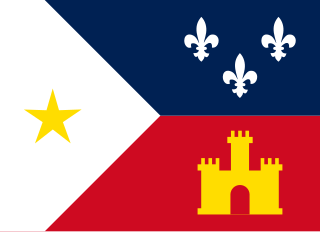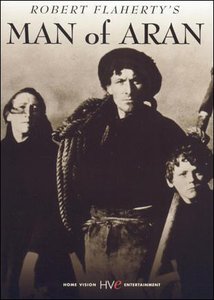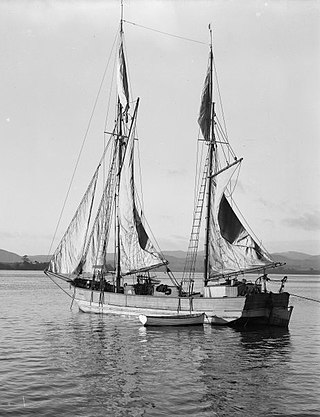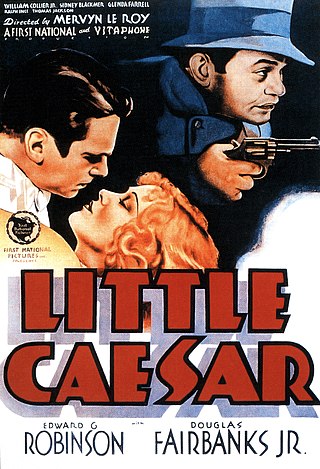
Nanook of the North is a 1922 American silent film that combines elements of documentary and docudrama/docufiction, at a time when the concept of separating films into documentary and drama did not yet exist. In the tradition of what would later be called salvage ethnography, the film follows the struggles of the Inuk man named Nanook and his family in the Canadian Arctic. It is written and directed by Robert J. Flaherty, who also served as cinematographer, editor, and producer.

Robert Joseph Flaherty, was an American filmmaker who directed and produced the first commercially successful feature-length documentary film, Nanook of the North (1922). The film made his reputation and nothing in his later life fully equaled its success, although he continued the development of this new genre of narrative documentary with Moana (1926), set in the South Seas, and Man of Aran (1934), filmed in Ireland's Aran Islands. Flaherty is considered the father of both the documentary and the ethnographic film.

The Cajuns, also known as Louisiana Acadians, are a Louisiana French ethnicity mainly found in the U.S. state of Louisiana and surrounding Gulf Coast states.

Tabu: A Story of the South Seas, sometimes simply called Tabu, is a 1931 American synchronized sound film directed by F. W. Murnau. While the film has no audible dialog, it was released with a synchronized musical score with sound effects using using the Western Electric Sound System sound-on-film process. A docufiction, it is split into two chapters: The first, called "Paradise", depicts the lives of two lovers on a South Seas island until they are forced to escape the island when the girl is chosen as a holy maid to the gods. The second chapter, "Paradise Lost", depicts the couple's life on a colonised island and how they adapt to and are exploited by Western civilisation. The title comes from the Polynesian concept of tapu, from which is derived the English word "taboo".

Terrebonne Parish is a parish located in the southern part of the U.S. state of Louisiana. At the 2020 census, the population was 109,580. The parish seat is Houma. The parish was founded in 1822. Terrebonne Parish is part of the Houma-Thibodaux metropolitan statistical area.

An oil platform is a large structure with facilities to extract and process petroleum and natural gas that lie in rock formations beneath the seabed. Many oil platforms will also have facilities to accommodate the workers, although it is also common to have a separate accommodation platform linked by bridge to the production platform. Most commonly, oil platforms engage in activities on the continental shelf, though they can also be used in lakes, inshore waters, and inland seas. Depending on the circumstances, the platform may be fixed to the ocean floor, consist of an artificial island, or float. In some arrangements the main facility may have storage facilities for the processed oil. Remote subsea wells may also be connected to a platform by flow lines and by umbilical connections. These sub-sea facilities may include one or more subsea wells or manifold centres for multiple wells.

Man of Aran is a 1934 Irish fictional documentary (ethnofiction) film shot, written and directed by Robert J. Flaherty about life on the Aran Islands off the western coast of Ireland. It portrays characters living in premodern conditions, documenting their daily routines such as fishing off high cliffs, farming potatoes where there is little soil, and hunting for huge basking sharks to get liver oil for lamps. Some situations are fabricated, such as one scene in which the shark fishermen are almost lost at sea in a sudden gale. Additionally, the family members shown are not actually related, having been chosen from among the islanders for their photogenic qualities.

A scow is a smaller type of barge. Some scows are rigged as sailing scows. In the 19th and early 20th centuries, scows carried cargo in coastal waters and inland waterways, having an advantage for navigating shallow water or small harbours. Scows were in common use in the American Great Lakes and other parts of the U.S., Canada, southern England, and New Zealand. In modern times their main purpose is for recreation and racing; there are also garbage scows for aquatic transport of refuse.

Thunder Bay is a 1953 American adventure film distributed by Universal International, produced by Aaron Rosenberg, directed by Anthony Mann, and starring James Stewart, Joanne Dru, Gilbert Roland, and Dan Duryea. It was shot in Technicolor and was released on May 20, 1953. This film tells the story of two engineers drilling for oil in the Louisiana gulf while dealing with hostility of the local shrimp fishermen fearing for their livelihood, and features the first non-western collaboration between Stewart and Mann.

Red Water is a 2003 American made-for-television horror film starring Lou Diamond Phillips, Kristy Swanson, Gideon Emery and Coolio. When former oil rig worker turned fishing captain John Sanders agrees to help when his ex-wife's company in extracting oil upriver and a group of thugs working for a Jamaican gangster search for $3 million buried underwater in the sam bayou, a large man-eating bull shark finds its way in the river and wreaks havoc. The film originally premiered on TBS Superstation on August 17, 2003.

Barataria Bay, also Barrataria Bay, is a bay of the Gulf of Mexico, about 15 miles (24 km) long and 12 miles (19 km) wide, in southeastern Louisiana, in Jefferson Parish and Plaquemines Parish, United States. It is separated from the gulf by two barrier islands, Grand Isle and Grand Terre.

Hurricane on the Bayou is an American 2006 documentary film that focuses on the wetlands of Louisiana before and after Hurricane Katrina.

Martin Pousson is an American novelist, poet, and professor.

Deepwater Horizon was an ultra-deepwater, dynamically positioned, semi-submersible offshore drilling rig owned by Transocean and operated by BP. On 20 April 2010, while drilling at the Macondo Prospect, a blowout caused an explosion on the rig that killed 11 crewmen and ignited a fireball visible from 40 miles (64 km) away. The fire was inextinguishable and, two days later, on 22 April, the Horizon sank, leaving the well gushing at the seabed and creating the largest marine oil spill in history.
Jed Horne is a Pulitzer Prize-winning journalist who was for many years city editor of The Times-Picayune, the New Orleans daily newspaper.

Little Caesar is a 1931 American pre-Code crime film distributed by Warner Brothers, directed by Mervyn LeRoy, and starring Edward G. Robinson, Glenda Farrell, and Douglas Fairbanks Jr. In 2000, Little Caesar was included in the annual selection of 25 motion pictures added to the National Film Registry of the Library of Congress being deemed "culturally, historically, or aesthetically significant" and recommended for preservation. The film tells the story of a hoodlum who ascends the ranks of organized crime until he reaches its upper echelons. The storyline, based on real life Mafia boss Salvatore Maranzano, was adapted from the novel of the same name by William R. Burnett. Little Caesar was Robinson's breakthrough role and immediately made him a major film star. The film is often listed as one of the first fully-fledged gangster films and continues to be well received by critics. The Library of Congress maintains a print.

Docufiction is the cinematographic combination of documentary and fiction, this term often meaning narrative film. It is a film genre which attempts to capture reality such as it is and which simultaneously introduces unreal elements or fictional situations in narrative in order to strengthen the representation of reality using some kind of artistic expression.

On April 20, 2010, an explosion and fire occurred on the Deepwater Horizon semi-submersible mobile offshore drilling unit, which was owned and operated by Transocean and drilling for BP in the Macondo Prospect oil field about 40 miles (64 km) southeast off the Louisiana coast. The explosion and subsequent fire resulted in the sinking of the Deepwater Horizon and the deaths of 11 workers; 17 others were injured. The same blowout that caused the explosion also caused an oil well fire and a massive offshore oil spill in the Gulf of Mexico, considered the largest accidental marine oil spill in the world, and the largest environmental disaster in United States history.

Deepwater Horizon is a 2016 American biographical disaster film based on the Deepwater Horizon explosion and oil spill in the Gulf of Mexico. Peter Berg directed it from a screenplay by Matthew Michael Carnahan and Matthew Sand. It stars Mark Wahlberg, Kurt Russell, John Malkovich, Gina Rodriguez, Dylan O'Brien, and Kate Hudson. It is adapted from "Deepwater Horizon's Final Hours", a December 25, 2010 article in The New York Times written by David Barstow, David Rohde, and Stephanie Saul.

Kathleen Gallagher is a Wisconsin-based non-profit executive who was awarded the 2011 Pulitzer Prize for Explanatory Reporting. Gallagher wrote with Mark Johnson, a reporter at the Milwaukee Journal Sentinel, a book based on the Pulitzer Prize-winning series called "One in a Billion: The Story of Nic Volker and the Dawn of Genomic Medicine." Gallagher is now Executive Director of 5 Lakes Institute, a non-profit that promotes technology and innovation. She is also Executive in Residence for Investment Communications at the University of Wisconsin-Milwaukee.



















